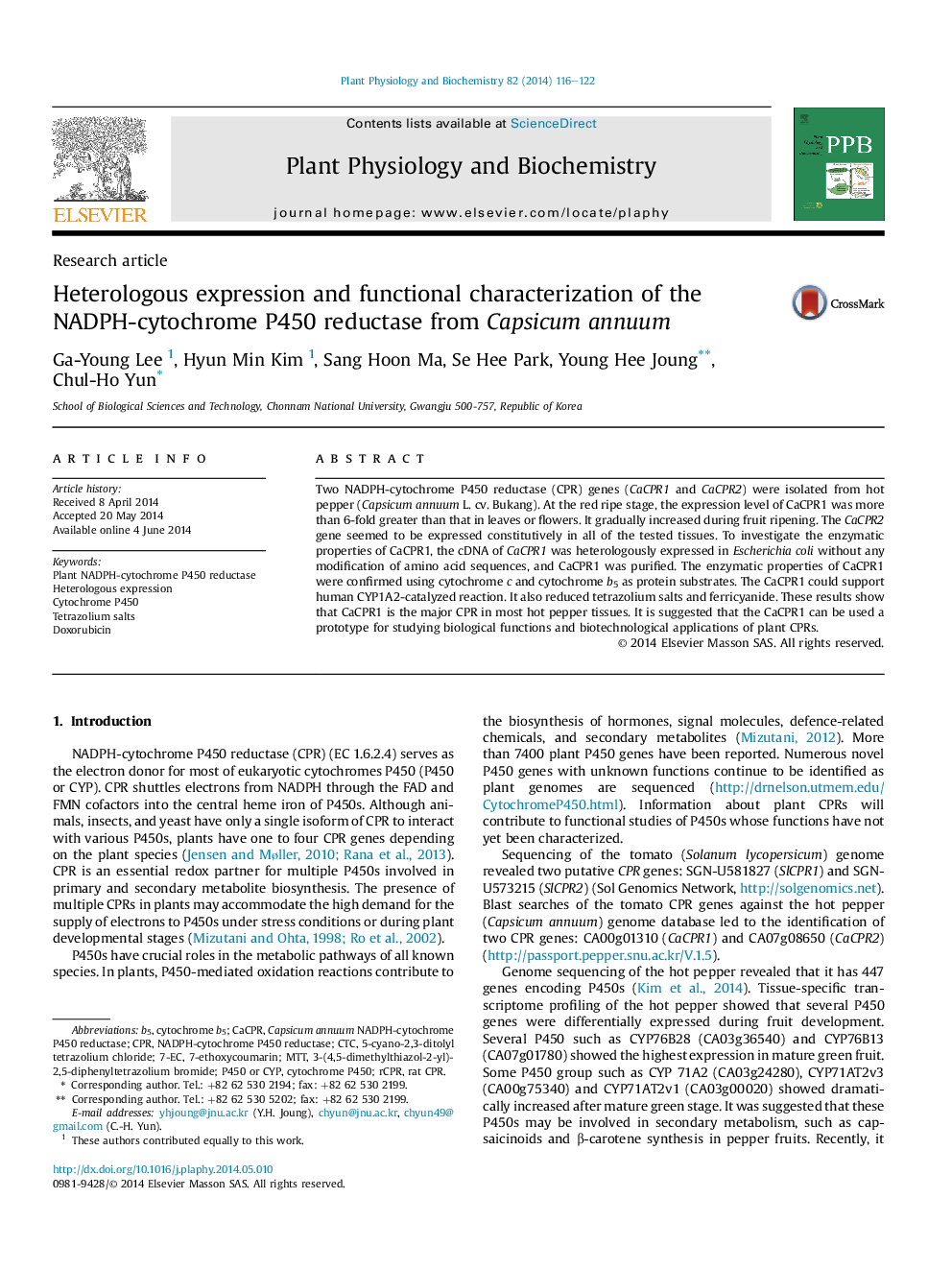| Article ID | Journal | Published Year | Pages | File Type |
|---|---|---|---|---|
| 2016093 | Plant Physiology and Biochemistry | 2014 | 7 Pages |
•Two NADPH-cytochrome P450 reductase (CPR) genes were isolated from hot pepper.•CaCPR1 is the major CPR in most of the tissues in hot pepper.•Expression level of CaCPR1 was gradually increased during fruit ripening.•CaCPR1 shows typical CPR activities toward protein and chemical substrates.•CaCPR1 reduces doxorubicin, an anticancer drug, to 7-deoxydoxorubicinone.
Two NADPH-cytochrome P450 reductase (CPR) genes (CaCPR1 and CaCPR2) were isolated from hot pepper (Capsicum annuum L. cv. Bukang). At the red ripe stage, the expression level of CaCPR1 was more than 6-fold greater than that in leaves or flowers. It gradually increased during fruit ripening. The CaCPR2 gene seemed to be expressed constitutively in all of the tested tissues. To investigate the enzymatic properties of CaCPR1, the cDNA of CaCPR1 was heterologously expressed in Escherichia coli without any modification of amino acid sequences, and CaCPR1 was purified. The enzymatic properties of CaCPR1 were confirmed using cytochrome c and cytochrome b5 as protein substrates. The CaCPR1 could support human CYP1A2-catalyzed reaction. It also reduced tetrazolium salts and ferricyanide. These results show that CaCPR1 is the major CPR in most hot pepper tissues. It is suggested that the CaCPR1 can be used a prototype for studying biological functions and biotechnological applications of plant CPRs.
